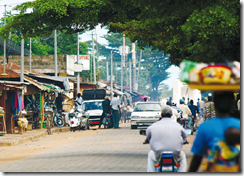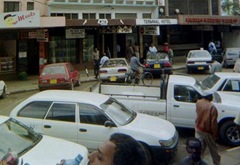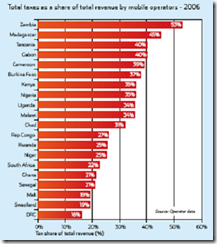Comm. goes in search of the beating heart of the Africa telecoms scene and discovers the sector has never been in better health

In this extract from a GSM Association report entitled, Mobile Investment Africa, the organisation’s senior vice president, Gabriel Solomon, considers the phenomenal expansion of the mobile telecoms sector on the continent, as well as its challenges.
Market Snapshot
In the opening quarter of 2008, mobile phone connections in Africa passed 280 million, overtaking the United States and Canada with their 277 million connections. Africa added 70 million connections compared to the previous year. In 2007, growth of 38 per cent made it the fastest growing region in the world, ahead of the Middle East (33 per cent) and the Asia-Pacific region (29 per cent). In June 2008, GSM Association (GSMA) expected the market growth to continue to pass the 300 million mark for connections in Africa.
Two-thirds of Africa’s national markets for mobile telephony are in their early phase of development, with penetration rates below 30 per cent at the end of 2007. Those markets represent 28 per cent (or 75 million) of the total connections in the region over the same period. In contrast, most European markets have penetration rates close to, or higher than, 100 per cent. In percentage terms, Africa is the fastest growing market in the world, but also the second smallest in terms of connections after the Middle East.
Most of the fastest growing markets are located in northern and western Africa, which represent altogether 63 per cent of the total connections in the region. However, the most highly competitive markets include Nigeria, Zambia, Tanzania, the Democratic Republic of the Congo, Kenya, Algeria, Tunisia, Ghana and South Africa.
Massive investment delivering universal access
In sub-Saharan Africa, the GSMA estimates that the mobile industry has invested around US$ 40 billion to date. If that is added to North Africa, the total amount may be double. The investments have delivered vast network roll outs across Africa, providing the mass majority of people with mobile coverage.
Mobile networks cover more people and land mass in Africa than in Europe. In Europe close to 500 million people and a land area of 4.2 million square kilometres are covered by mobile networks. In Africa more than 630 million people and a land area of about six million square kilometres have coverage. The remaining 320 million Africans who do not have network coverage live in an area of about 24 million square kilometres, the combined land mass of China, India and the US, who have an aggregate population of 2.7 billion.
Great challenges remain
It is a great challenge to develop sustainable business models that will provide mobile  services across a land mass the size of China, India and the USA with a consumer base that is 82 per cent less, and made up of the rural poor.
services across a land mass the size of China, India and the USA with a consumer base that is 82 per cent less, and made up of the rural poor.
At the ITU’s Connect Africa Summit in Rwanda in October 2007, the GSMA announced that its members had committed US$ 50 billion in investment for sub-Saharan Africa over the next five years. Operators’ main areas of focus are:
• Improved GSM network coverage to beyond 90 per cent of the population
• Roll-out of HSPA mobile broadband services
• Expanding the capacity and length of backhaul networks
• Re-branding and new product offerings, including high- speed services, as well as customer loyalty and retention programmes
• Better distribution – increase in points of sale, resellers
• Price competition – voice and data services (roaming, on-net calls and data bundles).
The market is certainly doing its best to provide universal access and affordable mobile services to all. But inconsistent regulation and sector-specific taxation are putting a brake on market development.
Sector-specific taxation
Mobile phones are a vital tool that drives economic growth and increases social capital. In a typical sub-Saharan African country, a 10 per cent increase in mobile penetration will boost that country’s gross domestic product (GDP) by 1.2 per cent. For example, in 2006 the mobile industry generated more than five per cent of Kenya’s GDP and employed more than 200,000 people.
Currently in sub-Saharan Africa:
• 24 governments levy specific luxury taxes on mobile handsets
• 8 governments levy specific luxury taxes on mobile usage (air time)
• Over 25 governments levy specific luxury taxes on ICT equipment.
Luxury taxes levied on the mobile industry and its customers have a negative impact on coverage and penetration and constrain the wider potential that the industry can bring to sub-Saharan Africa. And vitally, sector-specific taxation lowers potential tax contributions. The GSMA commissioned Deloitte to analyse the impact of lowering and removing such luxury taxes. The study found that by reducing and removing luxury taxes on mobile telephony, governments will collect more tax from the mobile industry as black markets diminish and legitimate markets grow. Uganda, for example, levies a 12 per cent luxury tax on air time. Deloitte analysis showed that if this tax was removed, the total tax take from the mobile sector would continue to increase substantially each year.
Best practice regulation
Governments should not take for granted private sector investment. Instead they should seek to maximise the potential of the  private sector by ensuring a fair and transparent regulatory regime. The GSMA study “Regulation and the Digital Divide” analysed data from 28 African countries and concluded that erratic regulation increases the cost of capital substantially. This is a major proportion of the cost base of a capital-intensive industry and can reduce planned investment by 25 per cent.
private sector by ensuring a fair and transparent regulatory regime. The GSMA study “Regulation and the Digital Divide” analysed data from 28 African countries and concluded that erratic regulation increases the cost of capital substantially. This is a major proportion of the cost base of a capital-intensive industry and can reduce planned investment by 25 per cent.
The study, undertaken in 2005-2006, found that if consistent and fair regulatory practice had been in place, capital costs would have been lower and an additional US$ 5 billion would have been invested in mobile capacity and infrastructure. Penetration would have risen by more than 30 per cent and the region’s GDP would have been boosted by over US$ 1 billion per annum. Such incentives should drive better regulatory practice.
For example, monopoly control of international gateways must end. It is choking African businesses as they seek to compete in a global marketplace. And it substantially raises the cost of doing business regionally too. When Kenya liberalised its international gateway, connectivity prices fell by 70 per cent immediately. In Nigeria, prices have fallen by 90 per cent since gateway liberalisation. In order for the mobile operators to provide mobile broadband services across the continent, licences must be issued and spectrum assigned.
There is an emerging dichotomy between governments who seek to obtain a windfall from the industry (similar to 3G licensing in Europe) versus governments who are content to “partner” with the industry and collect their gains over the longer term. The latter policy encourages investment and countries that have adopted this public-private partnership ethos lead the mobile broadband revolution in Africa.
Spectrum policy holds the key to broadband growth. The first wave of 3G licences are established at 2.1GHz, a frequency that has relatively low propagation characteristics, and is best suited for urban areas. When usage ramps up operators will need to use the extension bands at 2.5/2.6GHz to offer higher data rates.
To serve the rural areas with mobile broadband, the GSMA believes that African governments should allow for 900MHz refarming and should place a special emphasis on making available at least 100MHz of the UHF band that was identified at the 2007 ITU World Radio Conference. Using the lower spectrum frequencies can cut the required capex and opex by 30 per cent and make the business case for mobile broadband in rural areas considerably more attractive.
There is also an urgent need to bring down the cost of connectivity from Africa to the rest of the world through open-access fibre-optic cables. These cables are the umbilical cords that Africa can rely on to grow, stimulating the creation of new industries and employment, increasing the continent’s competitiveness, providing fast, reliable and affordable Internet connections for students and businesses, and encouraging foreign investment and export-led growth.
Taxation and regulation are the dual policy levers which governments can use to determine the growth rate of the mobile industry, and therefore of the greater economy. The mobile industry will connect Africa, bringing not only voice but also affordable data communications to the continent. It is incumbent upon governments to maximize the potential of the private sector’s investments by ensuring the right market conditions are upheld.






1 comment so far ↓
Nice writing style. I look forward to reading more in the future.
Leave a Comment